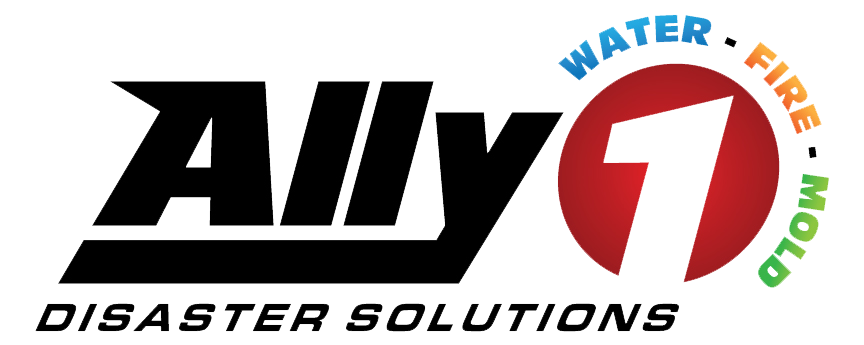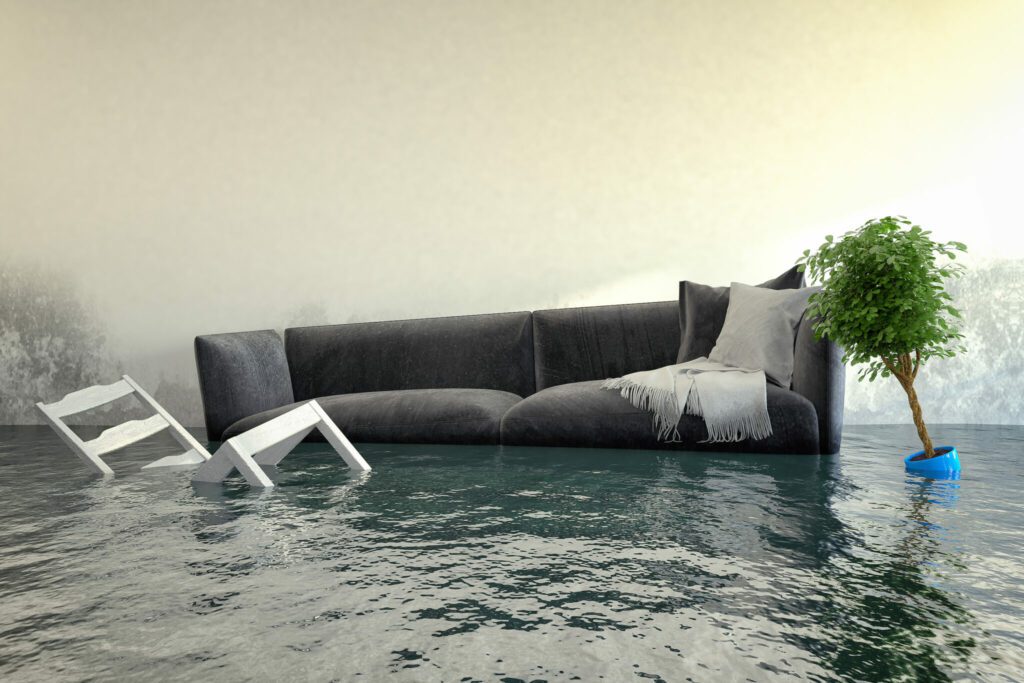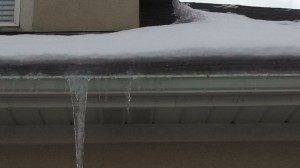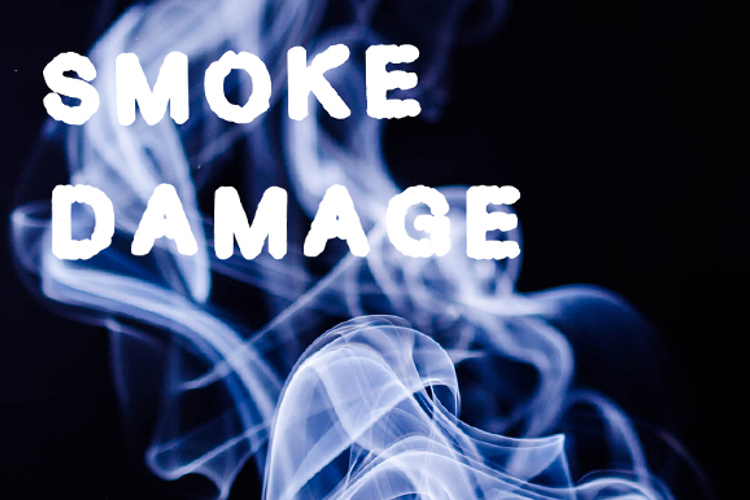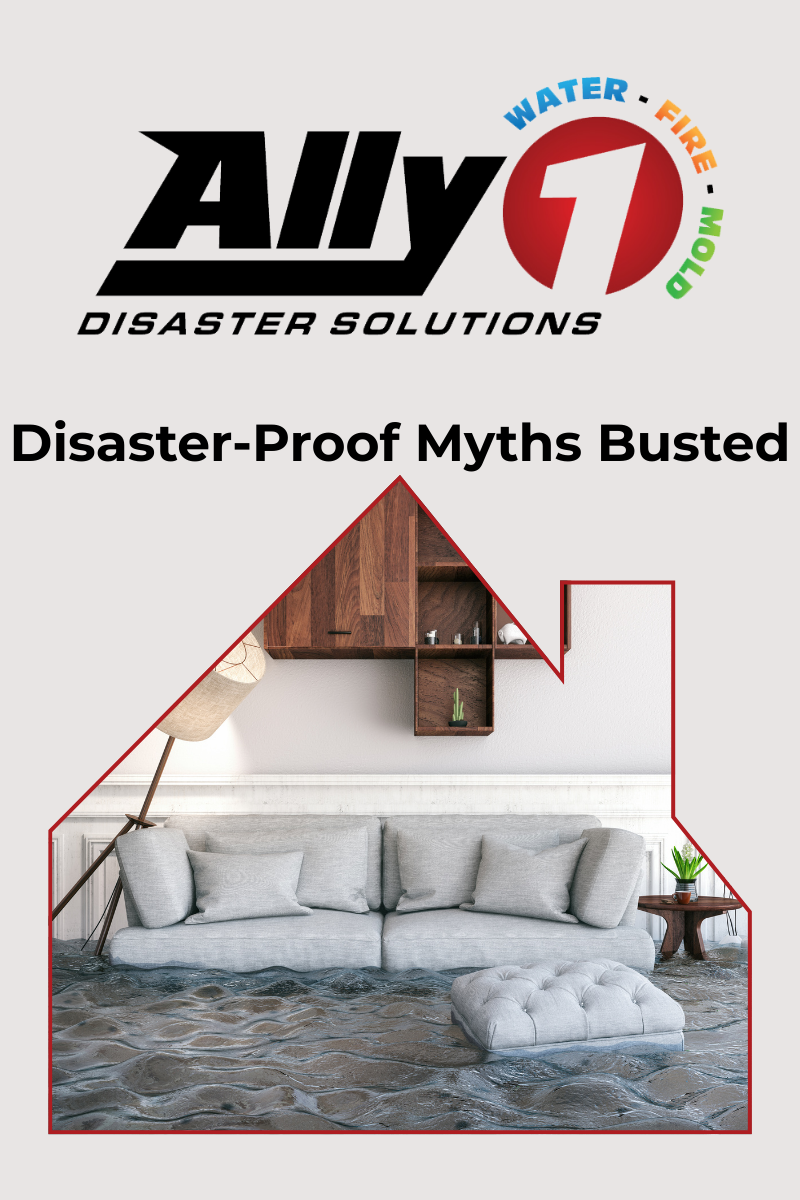ICE DAMS AND WATER DAMAGE – WHAT YOU NEED TO KNOW
Do you know what an ice dam is? Do you know why it’s important to prevent them from happening? Well, here’s a little “Ice Dam 101” that will help you to prevent a water damage cleanup situation in your home or business in the spring.
An ice dam is a ridge (or wall) of ice that forms at the edge of a roof or rain gutter and prevents melting snow (water) from draining off the roof. The water that backs up behind the ice dam pools up and remains a liquid. As the dam grows, it is fed by the melting snow above it, but will limit itself to the portions of the roof that are on average below 32°F. The pooling water can find cracks and openings in the exterior roof covering and flow into the attic space. Then it will leak into a home or business causing water damage from ice dams to walls, ceilings, insulation, carpets and other areas. Because of this, preventing ice dams is a MUST to prevent water damage and water damage cleanup.
For ice dams to form, there must be snow on the roof and higher portions of the roof’s outside surface must be above 32°F while lower surfaces are below 32°F. For a portion of the roof to be below 32°F, outside temperatures must also be below 32°F, and the temperatures must be sustained over a significant period of time. The snow on a roof surface that’s above 32°F melts, and as the water flows down the roof, it reaches the portion of the roof that is below 32°F and freezes, making a dam
YOUR ROOF MIGHT BE AT RISK OF ICE DAMS AND WATER DAMAGE?
Roofs with large surface areas exposed to the sun and having small run-off areas are prone to ice buildup. A classic example is a roof with several gables or dormers. Complex roof construction can increase the risk of ice accumulation, such as a roof with different surface angles that vary in their exposure to sunlight and drain into valleys.
Very heavy snowfalls also can create problems: a foot or more of snow on a roof combined with warm winter temperatures can warm the roof and cause snow melt and ice on eaves.
ICE DAM SOLUTIONS:
The damage caused by ice dams can be controlled in 2 ways:
- Make sure your entire roof surface stays at the ambient outdoor temperatures or
- Build a roof so that it can’t leak into sensitive building materials if an ice dam forms.
Cold roofs are smart and make a lot of sense because you let the cold outdoor air work for you. If you keep the entire roof as cold as the outdoor air – you solve the ice-dam riddle. Ice dams can’t form on roofs where there is no uneven melting and freezing! This prevents water damage from ice dams.
Keep an “air-flow barrier” between the heated space of the home or business and the roof. This is best done by proper (let me repeat- proper) insulation. If the warm air from your home can’t get to the cold surface of your roof and cause melting – Whalah, an ice dam won’t form!!
You can also make sure the roof system is well ventilated. A good roof-ventilation system helps keep the roof sheathing cold and melting won’t occur.
WHAT IF IT’S TOO LATE TO PREVENT ICE DAMS AND WATER DAMAGE?
Unfortunately, the damage from this winter may have already happened. Ice dams and water damage may have already entered your home or business. Damage can be occurring right now and you may not know it until later. If you’ve experienced water damage from an ice dam or if you suspect that damage may be happening, please don’t hesitate to give the professionals at Ally1 Disaster Solutions a call. We’re experts in water damage cleanup from ice dams and will make sure your home or office is dried and restored completely. Call us anytime. We’re always here to help.
